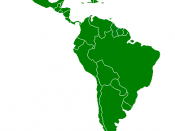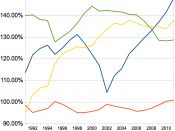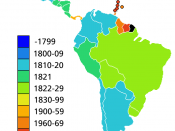HistoryThe diversity of Latin America is surely supported by the impressive history the countries all seem to share, which is expressly evident in each one today as it had been for centuries. What amazes me is the fact that the people who colonized these countries in the seventeenth and eighteenth century had a far more advance civilization than most had realized. The diversity does not only stop there but is also reflected in the varying climatic conditions such as "Peru's natural and cultural variations which include coast sierra and jungle" (Bryant, Y. U2) and the varied cultures like Dominica national dance Merengue (Clark, K. U2) and the diversity of the five regions within Colombia with each having bits own distinct mannerism and dialect (Buckmire, S. U2).
Roughly all of the Latin American countries diversity is as a direct result of the mixture of different culture which stem from the early days of colonization.
Their populations are based on Indigenous people from the first settlers to European, black and Asians due to slavery. All except Brazil was first settled by the Spanish. It's interesting to note that Brazil was originally "developed as a Portuguese commercial colony based on slavery which is still evident as Portuguese remains the official language that is spoken by the entire population" (Barrientos 2006, (as cited in Commodore, N. U2). The rich diversity that early colonization lends to these countries is so impressive when compared with other regions of the world. Many are still very much attracted to the countries for several reasons because they vary in ethnicity, culture, climate, agriculture and so much moreReligionDue to the European and Spanish conquerors of Latin America, Roman Catholicism is the dominant religion throughout the region today. (Commodore 06: Unit2) In some countries such as Costa Rico, Roman Catholicism is...



A bit short
Its a bit short for college.. but it is written out in complex matters.. good work.
0 out of 0 people found this comment useful.